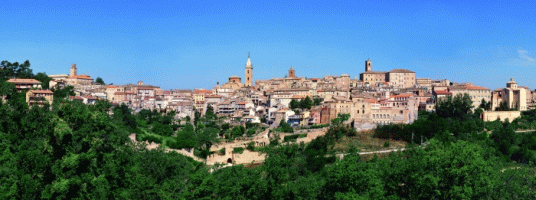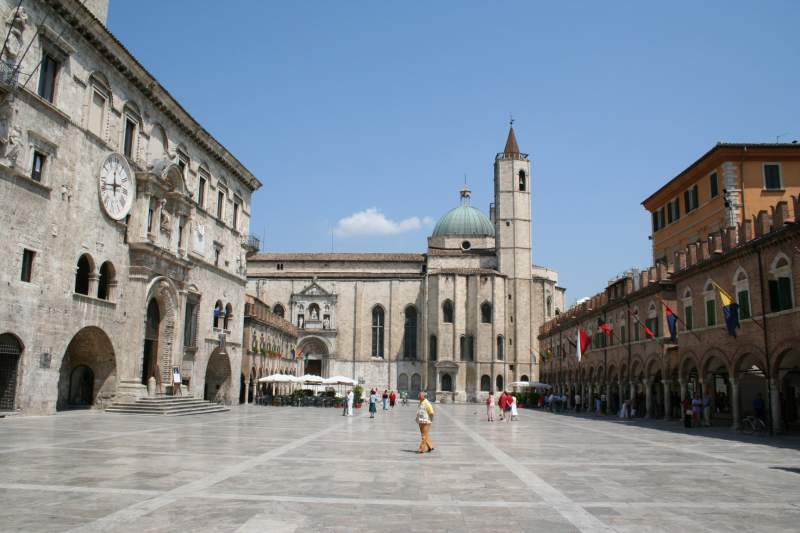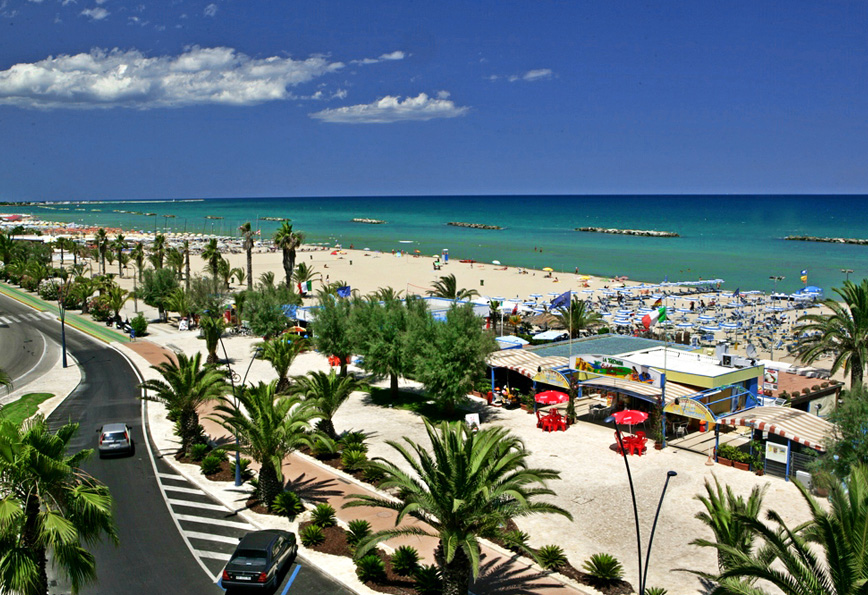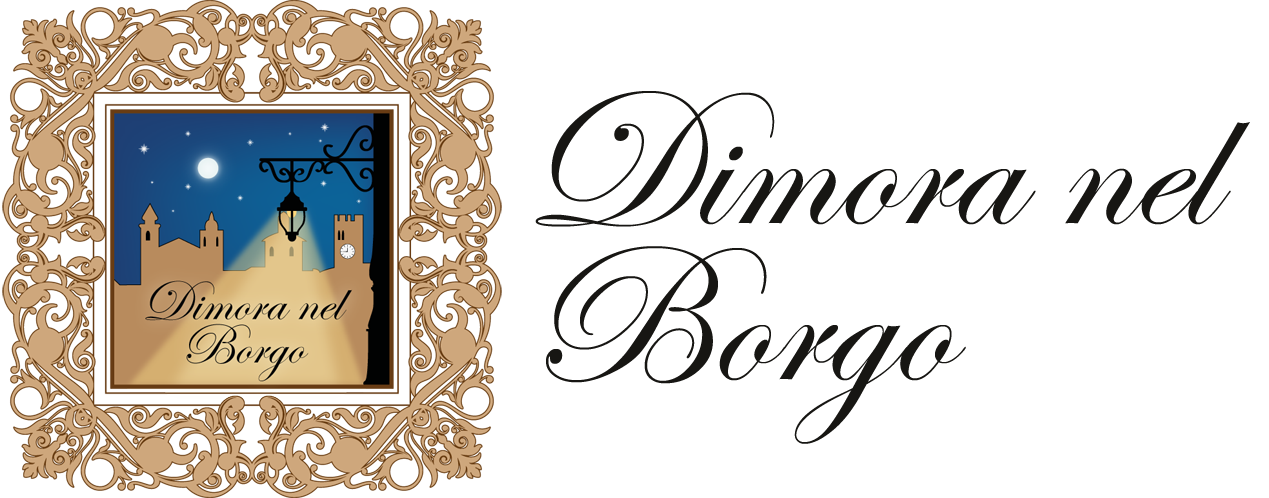OFFIDA
![offida03[1]](http://www.bbdimoranelborgo.it/en/wp-content/uploads/sites/2/2015/02/offida031.jpg)
THE TOWN HALL
One of the most beautiful in the region, the 11th-12th Century Town Hall building has a row of magnificent swallowtail battlements in its facade. The beauty of the clock tower belies the fact that it was formerly used as a prison for those sentenced to death. An elegant portico on the ground floor, and loggia above, supported by a row of travertine columns, complete the facade.
The Church of Santa Maria della Rocca
At the edge of town, imposing and proud in its magical environment, austere guardian of the secrets and virtues of the town, the Church of Santa Maria della Rocca is tangible evidence of the elegance and splendor with which the Benedictine monks surrounded themselves.
THE CARNIVAL OF OFFIDA
« Lu bov’ fint and Li Vlurd »
Offida reveals its particularly playful and even somewhat wild side in the festivities of carnival, the week prior to Lent. In fact, there is something sacred and mystical in the way in which carnival is celebrated in Offida. The people of Offida prepare for carnival as if preparing for a ritual. The main events are “Lu Bov Fint,” which is celebrated on the last Friday before lent, and “Li Vlurd”, which is celebrated on Shrove Tuesday.
LACE MAKING
In Offida, the tradition of handmade lace has been preserved and handed down through the generations. This rhythmic interweaving of bobbins around pins in a cushion is raised to the level of artistry in Offida. The traditional altar cloths, table centres, and bed covers are worked with patience and passion. Through the innovations of younger generations of lace makers, one can also now find Offida lace in items such as clothing, jewellery and handbags.
RIPATRANSONE

The origins of the town date back to 1205. The town itself is particularly well preserved. Its streets and squares display the beauty of medieval, Renaissance and Baroque buildings, as well as the narrowest street in Italy – just 43cm wide. In Piazza Condividi is the Cathedral of Saints Gregorio and Margherita, built between 1597 and 1623, whose interior has three naves and a Latin cross. The church houses paintings by major artists such as De Magistris, Ghezzi, and Gentileschi, and the Diocesan Shrine of Our Lady of Loreto. In the corner of the main square is an elegant and distinctive house decorated with loggias, where Ascanio Condividi lived, a pupil and biographer of Michelangelo. The Town Hall, with its imposing structure, was originally built in the 13th Century (although completely rebuilt in the 17th Century), and today houses the library and the Archaeological Museum. Palazzo del Podestà is one of the few examples of transitional Romanesque-Gothic buildings in the area.
Cavallo di Fuoco
Ripatransone celebrates its history every year with one of the oldest pyrotechnics events in Italy, the Cavallo di Fuoco, whose origins date back to 1682. On the first Sunday after Easter, an imitation horse bedecked with fireworks is paraded about the square, a thrilling spectacle not only for the locals but also for the crowds of tourists that flock to the much-anticipated event.
ASCOLI PICENO

Piazza Arringo
Traditionally Piazza Arringo was an assembly point for public meetings and this is probably where it got its name. This space was devised to be a centre of power, both for the citizens and the church.
The Cathedral
In the centre of the façade, designed by Cola dell’Amatrice, between 1529 – 1539, there is an impressive main entrance. On the left hand side of the Cathedral one can see the “porta della Musa”, a finely decorated Renaissance door.
The Town Hall
The impressive renaissance town hall is the result of the merging of two pre-existing 12th Century buidlings. In the interior courtyard there is a grand garden with plants, fountains, busts of important Ascoli citizens, and roman and medieval architectural pieces. The inside of the building is noteworthy for its beautiful frescos and luxurious period furnishings.
The Captains’ Palace
The building dates back to the 13th Century when it was decided to incorporate the two pre-exisitng buildings into one stucture. In its time the palace has paid host to high officials, governors, papal staff, prefects and appointed Captains of the People, (powerful magistrates first established at the end of the 1300s).
The Church of St. Francesco
The construction of the church began in 1258, a few years after St. Francesco passed through the city. It is considered to be one of the most important examples of Franciscan architecture it Italy. In the entrance facing Piazza del Popolo, there is a travertine monument depicting Pope Julius II.
SAN BENEDETTO DEL TRONTO

San Benedetto del Tronto is an economic centre of primary importance, and the Province’s second largest city after Ascoli Piceno. It’s historical origins are still up for discussion, since there are as yet no reliable sources. Although previously traced back to the 12th Century, recent archaeological finds dating back to the Roman era have thrown the date open to question. Long contested by Ascoli and Fermo, the town’s history is also marked by raids from Turks and pirates, bent on looting and destruction. These raids, emigration, immigration, and relations with Trans Adriatic populations, are all elements of the story of how and why this small village has undergone such marked expansion. The coastal road having been made easier and safer, San Benedetto became an important junction linking the Papal States and the Kingdom of Naples. New job prospects, with the sea as a means of livelihood, pushed the 19th Century community, then nestled on the hillside, down to the seafront.
